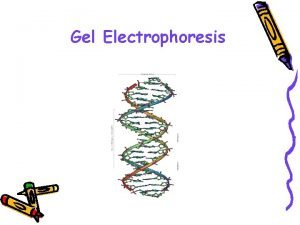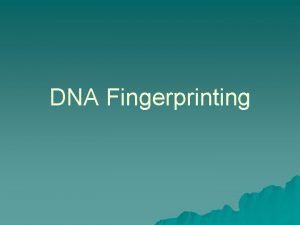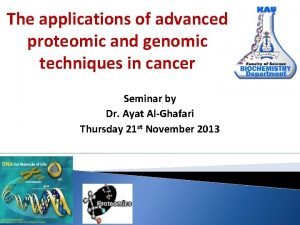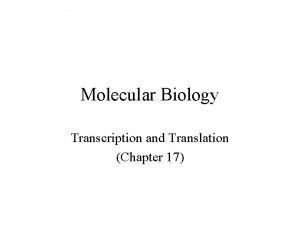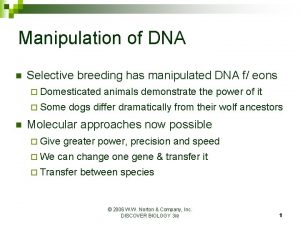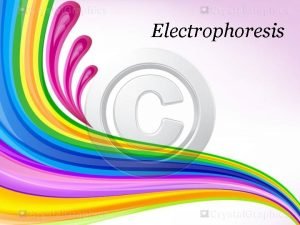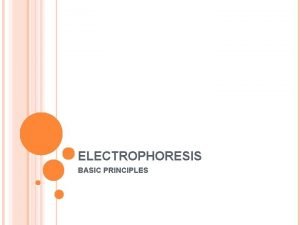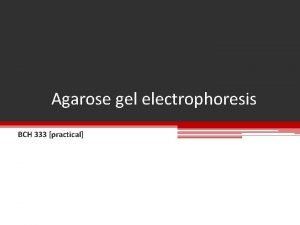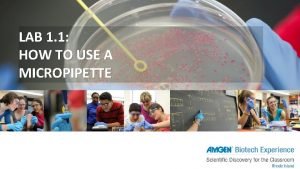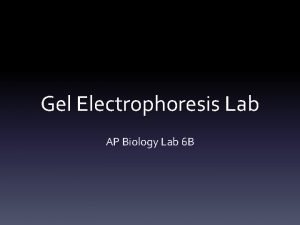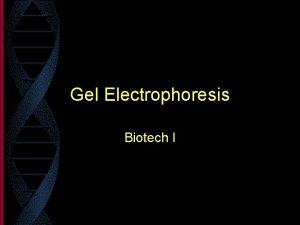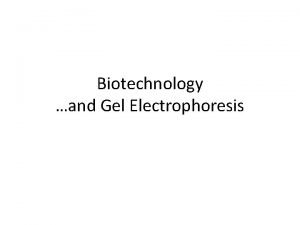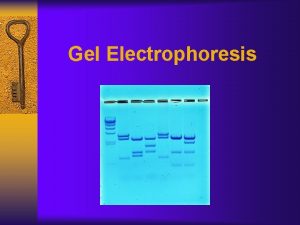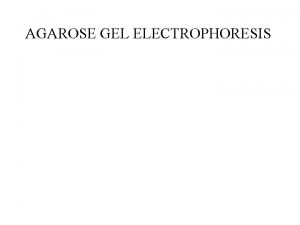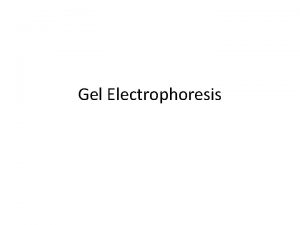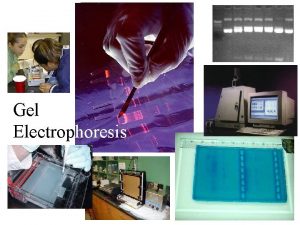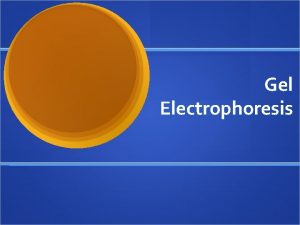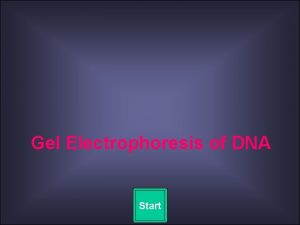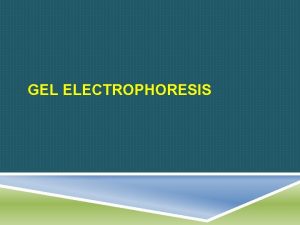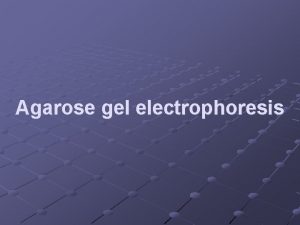Gel Electrophoresis Electrophoresis DNA Separation Standard tool in












- Slides: 12

Gel Electrophoresis

Electrophoresis: DNA Separation § Standard tool in biochemistry labs § Uses § Diagnose disease § Identify genes and gene structures § Human genome project § Understand evolution of plants and animals § Genetic engineering of organisms (Example: drought resistant crops § Forensic science

DNA! Ø Extracted from animal, plant, and bacteria cells Ø Individual cells are split open, and the DNA is separated from the rest of the cellular debris Ø DNA is then treated with special proteins called restriction enzymes, which cleave the DNA into smaller fragments

How does Electrophoresis work? § DNA molecules are negatively charged § Use electricity to separate DNA protein molecules based on charge and mass § DNA samples are taken from animal or plant cells

Agarose Gel § Used as the support material to separate DNA molecules § Derived from seaweed § Note “wells”- DNA solution is loaded into these holes

Loading the Gel § DNA loaded into gel: mixture of different sized DNA fragments

Loading the Gel § Loading gel with DNA mixture + dye § Gel is suspended in buffer which conducts electrical current

Separation of DNA § Note applied electrical charge- DNA is negatively charged and will migrate to the positive pole § Gel matrix acts as a “seive” for DNA § Large DNA molecules cannot pass through the small holes in the gel § Small molecules move easily through the gel

Running the Gel § § Electric current is applied to gel DNA starts to migrate through the gel

Separation of DNA § As separation continues, the smaller fragments move farther down the gel

Molecular Markers § A DNA molecular marker “ladder” is run at the same time as your sample DNA § Markers are of known molecular weights § Markers used to estimate the sizes of your sample DNA

Reading the Gel § Dye in gel reacts with UV light, DNA is fluorescent § Photo taken
 How does dna move in gel electrophoresis
How does dna move in gel electrophoresis Why dna is negatively charged
Why dna is negatively charged Gel electrophoresis separates dna by
Gel electrophoresis separates dna by Process of gel electrophoresis
Process of gel electrophoresis Translate
Translate Ashanthi desilva
Ashanthi desilva Principle of electrophoresis
Principle of electrophoresis Disadvantages of electrophoresis
Disadvantages of electrophoresis Agarose gel electrophoresis vs sds page
Agarose gel electrophoresis vs sds page How to use the micropipette
How to use the micropipette Ap biology lab 6
Ap biology lab 6 Is gel electrophoresis a biotechnology
Is gel electrophoresis a biotechnology Zone electrophoresis definition
Zone electrophoresis definition

